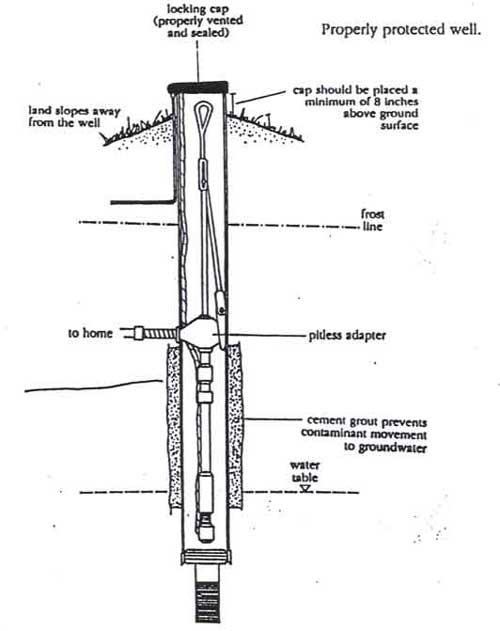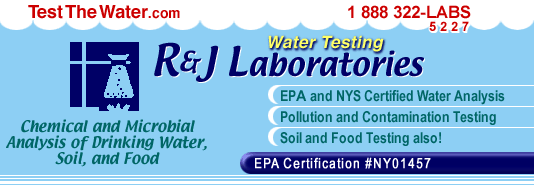Home
Owners
On
Well Water
............................................
How
to properly protect your well...
Page
1 of 2
next
page>
The
casing of a properly protected well should extend at least 8
inches above the ground. In potential flood areas, the top of
the well casing should be 2 feet above the highest known floodwater
elevation. The ground surface should slope away from the well
at least 6 inches in the first 10 feet to prevent water from
ponding around the casing. A pitless adapter is used to extend
the casing above the ground level (for access and aquifer protection)
while providing, to the home, a discharge below the frost line.
One type of pitless unit is shown in figure 3.1. State or local
health departments may have stricter requirements for well protection.
Before
pitless adapters, well pits were commonly used to provide a discharge
below the frost line. Experience has shown that well pits are
unsanitary, because water collects in them and can enter the water
supply through an improperly sealed casing. Animals may find their
way into the pits, increasing the risk of contamination. In addition,
the wet environment of a well pit may accelerate deterioration
of the pumping equipment.
The
top of the well casing should be covered with a sanitary seal,
an approved well cap, or a pump mounting that completely covers
the well opening. The well cap should be vented, with the outlet
facing the ground. The outlet should be covered with a fine mesh
screen or filled with fiberglass wool. The vent outlet should
be 2 feet above the highest known flood elevation or 8 inches
above the ground surface in areas that are not flood prone.
To
prevent surface water from entering groundwater through the
space between the well casing and the frill hole, a cement or
clay grout should be installed beneath the pitless adapter.
This is shown in figure 3.1. Filling the space between the well
bore hole and the casing with soil or cuttings is not a suitable
substitute for grout; surface water will flow through the soil
or cuttings and may contaminate the well.

Page
1 of 2
next>

